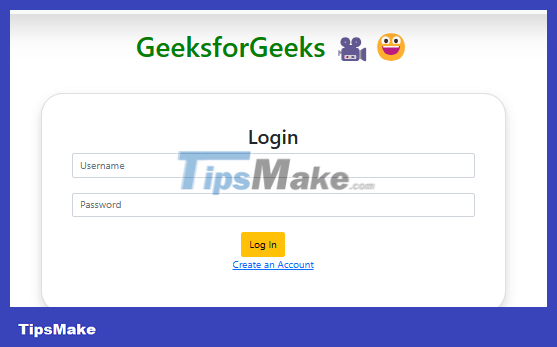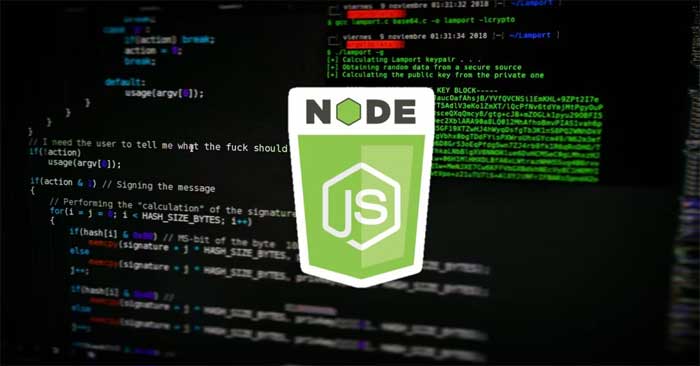How to create a movie ticket booking system using Django
Programming a movie ticket booking system using Django is not difficult. Below is a detailed step-by-step guide on how to book movie tickets using Django .

First, we'll create a home page that lists all the movies currently available for booking. When customers want to book tickets, they must create an account, then click the Book button. The booked ticket will then appear in the pending section. Here, you have the option to cancel tickets, pay and see the total number of tickets booked.
Ticket booking system using Django
Here are the steps to create a ticket booking website using Django:
Start the project directory
To start the project, use this command:
django-admin startproject core cd core To start the app use this command:
python manage.py startapp homeNow add this app to 'settings.py'
INSTALLED_APPS = [ "django.contrib.admin", "django.contrib.auth", "django.contrib.contenttypes", "django.contrib.sessions", "django.contrib.messages", "django.contrib.staticfiles", "home", ]File structure:

Set up files
Models.py : This file is used to create models: BaseModel , MovieCategory , CartItems . Templates are used for storing information in the database.
from django.db import models from django.contrib.auth.models import User import uuid class BaseModel(models.Model): uid = models.UUIDField(default=uuid.uuid4, editable=False, primary_key=True) created_at = models.DateField(auto_now_add=True) updated_at = models.DateField(auto_now_add=True) class Meta: abstract = True class MovieCategory(BaseModel): category_name = models.CharField(max_length=100) class Movie(BaseModel): category = models.ForeignKey(MovieCategory, on_delete=models.CASCADE, related_name="pizzas") movie_name = models.CharField(max_length=100) price = models.IntegerField(default=100) images = models.CharField(max_length=500) class Cart(BaseModel): user = models.ForeignKey(User, null=True, blank=True, on_delete=models.SET_NULL, related_name="carts") is_paid = models.BooleanField(default=False) class CartItems(BaseModel): cart = models.ForeignKey(Cart, on_delete=models.CASCADE, related_name="cart_items") movie = models.ForeignKey(Movie, on_delete=models.CASCADE) views.py : This code defines the viewers that handle different web pages in the Django web application. View windows include the home page, login page, registration page, shopping cart, and remove items from cart.
- User Authentication : It uses Django's inbuilt authentication system for user registration and login. Users can create an account using a username and password. This code checks for available usernames and handles authentication.
- Show movies : The 'home' viewer retrieves a list of movies from the database and passes them to the 'home.html' template for display. This allows users to view a list of movies on the home page.
- Cart management : Users can add keys to the cart. The 'add_cart' page will handle this problem by linking the movie to the user's cart located in the database. The 'cart' page shows the contents of the user's shopping cart.
- Error handling and reporting : This code handles errors and exceptions. It displays appropriate error messages using Django's 'messages' framework to notify users of errors such as incorrect login information or registration issues.
- Authentication decorator : '@login_required' is used to protect specific viewers. It ensures only authenticated users have access to the shopping cart or remove them from it. If the user is not authenticated, the application will return them to the login page.
{% load static %} Hello, world! GeeksforGeeks ????????
{% block start %}{% endblock %} Create GUIs
Base.html : This is the basic HTML file of the web that displays the site's logo. This file is inherited by all other HTML files.
{% load static %} Hello, world! GeeksforGeeks ????????
{% block start %}{% endblock %} Home.html : This is the HTML file used to view the home page of the website. You can see all the website's products here and add them to your cart if you want.
{% extends "base.html" %} {% load static %} {% block start %} {% for movie in movies %} 
{{movie.movie_name}}
Ticket Price - ₹ {{movie.price}}
Session - {{movie.category.category_name}}
???? Book
{% endfor %} {% endblock %} Register.html : This HTML page is used to collect user information and use it to register users.
{% extends "base.html" %} {% load static %} {% block start %} {% if messages %} {% for message in messages %} {{ message }} {% endfor %} {% endif %} {% csrf_token %}Register
Already have an Account
{% endblock %} Cart.html : It displays relevant information such as serial number, ticket cancellation options, photos, movie name and link to pay. This dynamic content is generated based on the items in the user's cart.
{% extends "base.html" %} {% load static %} {% block start %}{% for cartItems in carts.cart_items.all %} {% endfor %}
| S.No. | Cancel Toicket | Book | Movie Name | Watch |
|---|---|---|---|---|
| {{forloop.counter}} | ???? Cancel Tickets |  | {{cartItems.movie.movie_name}} | ???? Pay Now |
{% endblock %} Urls.py : This code is responsible for routing and serving web pages in the Django application when handling media files and static files based on the application's settings.
from django.contrib import admin from django.urls import path from home.views import * from django.conf.urls.static import static from django.conf import settings from django.contrib.staticfiles.urls import staticfiles_urlpatterns urlpatterns = [ path('', home, name='home'), path('cart/', cart, name='cart'), path('remove_cart_item/', remove_cart_item, name='remove_cart'), path('add_cart/', add_cart , name="add-cart"), path('login/', login_page, name="login"), path('register/', register_page, name="register"), path("admin/", admin.site.urls), ] if settings.DEBUG : urlpatterns +=static(settings.MEDIA_URL, document_root = settings.MEDIA_ROOT) urlpatterns += staticfiles_urlpatterns() Project implementation
Run this command to apply the migration:
python3 manage.py makemigrations python3 manage.py migrateRun this server with the help of the following command:
python3 manage.py runserverResult:



Hope this article is useful to you!
You should read it
- Instructions for registering CGV Cinemas account
- How to Be a Ticket Broker
- How to Fight a Jaywalking Ticket
- How to create movie posters in GIMP
- Anyone can create a small and simple website with these 10 websites
- Top 10 best hotel booking apps on Android
- What is IMDb? What is IMDb score? How does IMBb affect cinema?
- How to Write a Letter to Contest a Parking Ticket
May be interested
- How to design a HEX to RGB converter using ReactJS
 do you know how to create a reverse hex to rgb converter? if not, please read the instructions for designing this tool in react.js below.
do you know how to create a reverse hex to rgb converter? if not, please read the instructions for designing this tool in react.js below. - How to enhance Python code with Concurrency and Parallelism
 concurrency and parallelism are two techniques that allow you to run several programs simultaneously. python has many options for processing multiple tasks simultaneously and in parallel, but that can confuse many people.
concurrency and parallelism are two techniques that allow you to run several programs simultaneously. python has many options for processing multiple tasks simultaneously and in parallel, but that can confuse many people. - Things you need to know about Actions in Svelte
 actions in svelte are an extremely powerful feature and something programmers definitely need to know. here is the basic knowledge about actions in svelte.
actions in svelte are an extremely powerful feature and something programmers definitely need to know. here is the basic knowledge about actions in svelte. - How to compress images in Node.js using Sharp
 compressing images for the web or in apps can greatly improve performance. sharp will help you compress images in node.js easily.
compressing images for the web or in apps can greatly improve performance. sharp will help you compress images in node.js easily. - TypeScript optional parameters in Callbacks
 typescript is a popular programming language used to build powerful and scalable applications. in typescript, callback parameters are optional, which means they may or may not be provided when calling the callback.
typescript is a popular programming language used to build powerful and scalable applications. in typescript, callback parameters are optional, which means they may or may not be provided when calling the callback. - Difference between Zsh and Bash
 both shells provide powerful scripting languages but they are not fully compatible with each other. let's find out the difference between zsh and bash with tipsmake.com.com!
both shells provide powerful scripting languages but they are not fully compatible with each other. let's find out the difference between zsh and bash with tipsmake.com.com!






 How to build an authentication system in Django using OAuth
How to build an authentication system in Django using OAuth How to Create a CRUD App with Django's Class Based Viewers
How to Create a CRUD App with Django's Class Based Viewers How to put Django app into maintenance mode
How to put Django app into maintenance mode How to Implement ChatGPT in Django
How to Implement ChatGPT in Django How to Install and Configure PostgreSQL in Django
How to Install and Configure PostgreSQL in Django